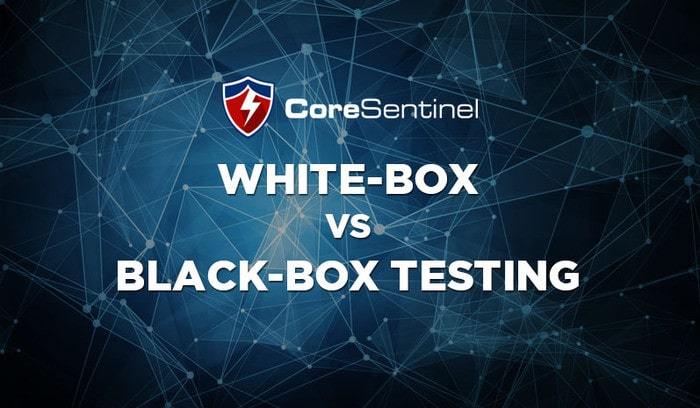Black Box vs. White Box Testing: Key Differences Every Organisation Should Know

Black Box vs. White Box Testing: Key Differences Every Organisation Should Know
Jun 9 2017In today’s high tech world, no one is truly immune from cyber crime. Whether you’re a big corporation, government entity, non-profit organisation, startup or individual; you are a potential target. As tools of attack get more sophisticated and increasingly easier to come by, the number of daily attacks continues to grow.
So you think hackers aren’t interested in you because you’re too small a target? Think again. If you’re connected to the internet — you are at risk!
What can you do?
One answer is penetration testing to simulate a real world attack in order to identify and close off vulnerabilities that can be leveraged during an attack. However, there are two main avenues to it:
- White box penetration testing
- Black box penetration testing
There is also grey box testing which is a combination of the two.
The following sections will help you understand how these tests differ from each other, their pros and cons, and how to leverage each technique for your protection.
What is Black Box and White Box Testing?

Black Box and White Box Testing are two different approaches to penetration testing, each having their own sets of procedure, but with one common goal: to uncover web and mobile application, network or computer system vulnerabilities that a hacker can infiltrate and exploit. The main dividing line between the two techniques is whether or not the penetration tester has foreknowledge of the internal infrastructure, source code, and functionality of the target web application, network, or computer device they seek to exploit.
What are the Differences Between These Two Techniques?
White box testing is when the penetration tester works with a foreknowledge of the network or web application’s design, structure, and source code prior to testing.
Black box testing on the other hand, is when the tester has absolutely no knowledge about the inner workings or structure of the system, device, or application being tested. Both methods have their pros and cons. Let’s examine them in greater detail.
White Box Testing
Also known as glass box testing or clear box testing, the scope of knowledge required for white box penetration testing may includes;
- The application’s source code;
- Network protocols;
- Diagrams or design information; and
- IP addresses
White box testing is low level testing since it delves deep into the inner workings of an infrastructure or web application. Thus the test is capable of being performed in conjunction with a secure code review, or source code review in order to identify vulnerabilities at the code level before they become functional.
Being intimately familiar with the infrastructure, white box penetration testers are able to gather detailed information and gain deep insight, allowing them to systematically identify and expose bugs, flaws and vulnerabilities within the target system.
Advantages of White Box Testing:
- Thorough and in-depth testing
- Saves time since the important details are already known
- Extensive testing of areas (including code efficiency and program flow) which would have been inaccessible via black box testing
Disadvantages of White Box Testing:
- The attack lacks any semblance of realism
- The tester thinks and acts differently than a non-informed attacker
READ: DEFINITIVE GUIDE TO PENETRATION TESTING
Black Box Testing
Black box testing is more of a high-level kind of testing as it is done from the perspective of an attacker or an end-user without any previous information whatsoever about the target application’s internal functionality.Due to the lack of foreknowledge of the target system available to the pentester, the scope of the test can also be much broader and far less specific than white box testing.
Black box penetration testing has various facets to it, which may extend to:
- Network Scanning
- Remote Access Exploitation
- Social Engineering
- Server Level Vulnerabilities
All this yields one great advantage in that it simulates a real world attack.
Other advantages of black box testing include:
- Simulates a real world attack scenario.
- Unbiased results because the tester works independently from the developer.
- Tester approaches the target infrastructure without any foreknowledge, just like an attacker.
- Facilitates identification of weak areas in functional performance, or low hanging fruit.
Disadvantages of black box testing:
- Testing every possible program path can be time-consuming, potentially leaving certain scenarios untested due to time constraints.
- Some scenarios are extremely difficult to test without a solid blueprint or clear specifications
Conclusion
There is no real right or wrong decision when choosing whether to perform a black box or white box penetration test. Whichever method is chosen will depend upon the individual scenario and business requirements in each specific circumstance. Commonly, a white box penetration test is performed initially, with a black box penetration test performed after the issues discovered in the white box test have been resolved. This allows for residual vulnerabilities not discoverable with a white box approach to be identified and fixed.
Core Sentinel is a world-leading team of cyber security professionals. When commissioning us for a penetration test, we always match our strategy with your specific requirements, scenarios and budget. That way we can help identify and resolve security issues in the most direct, time-efficient and cost-effective manner.
Every organisation’s needs are different. Let us know if you have questions about how you might benefit from white box and black box testing. We are always ready to answer whatever questions you might have.
Call one of our consultants today!

